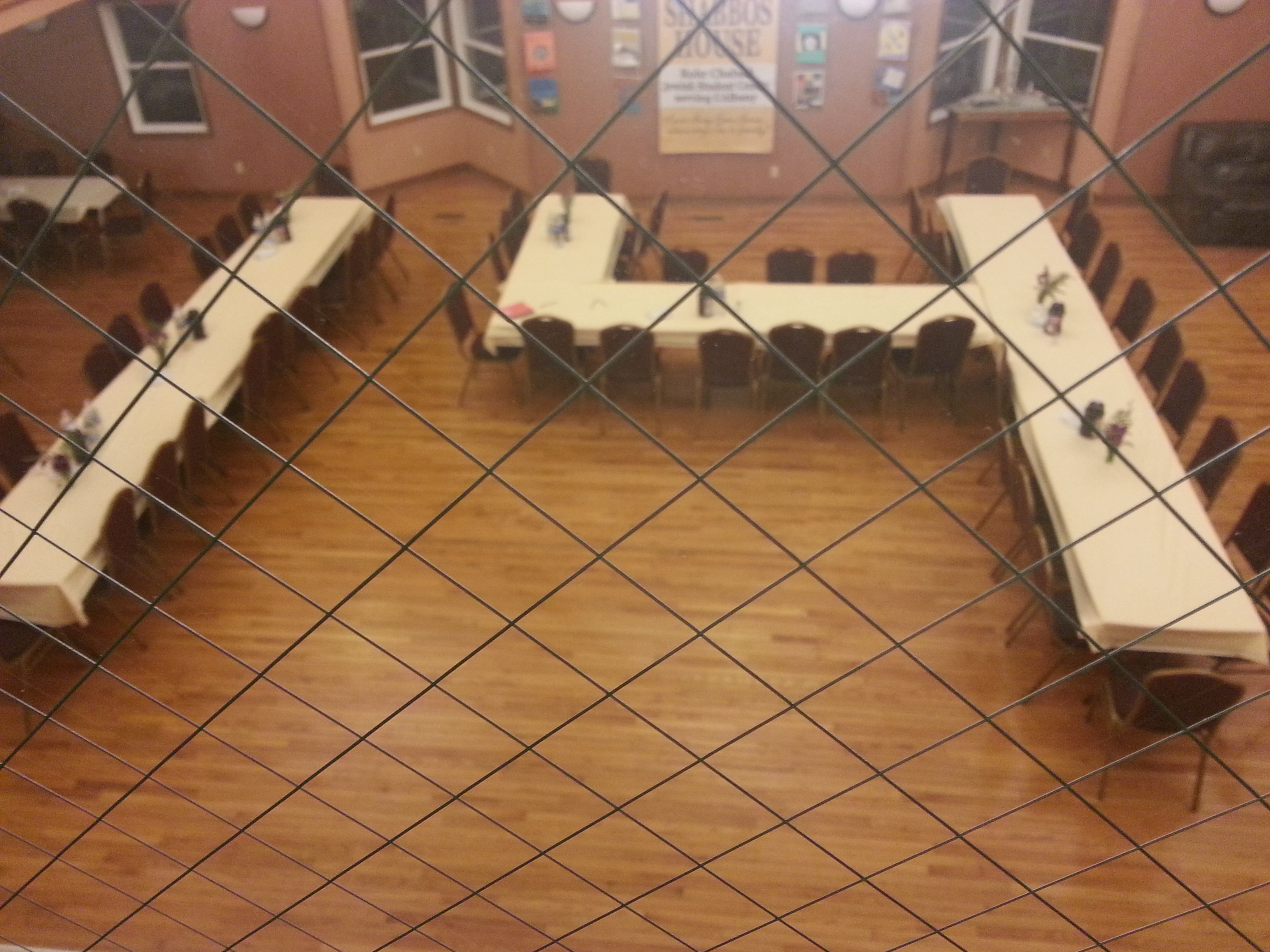 On the Shabbat of the UAlbany December Graduation Weekend, we set up the center tables at Shabbos House in the shape of a huge number fourteen, in honor of these final graduates of the Class of 2014. These students have been very active at Shabbos House and at the core of UAlbany Jewish life, so we wanted to do something special and different to highlight their December graduation.
On the Shabbat of the UAlbany December Graduation Weekend, we set up the center tables at Shabbos House in the shape of a huge number fourteen, in honor of these final graduates of the Class of 2014. These students have been very active at Shabbos House and at the core of UAlbany Jewish life, so we wanted to do something special and different to highlight their December graduation.
Once we got the tables into a number 14 formation, we had to come up with a twist and inspiration to share on Friday Night. The first thing that came to mind is that old calculator gimmick, you type in 07734 and turn it upside down to read hello, or write 14 and flip it and it becomes an old digital HI. But this was a farewell, so nothing much came of that idea.
So back to the significance of the number 14. I came up with two secular things and two Jewish things, and lo and behold their messages parallel (by some imaginative thinking) and are an important message for graduation.
First the two secular 14’s:
The fourteenth amendment to the US Constitution is the Equal Protection under the Law and Due Process clause. Actually, these two themes have been in the news quite a bit in the last couple of weeks (without getting into the whole politics of it). This 14th amendment, which dates back to the post Civil-War Reconstruction days, is one of the most cited amendment in current day Supreme Court rulings.
And then (obviously less importantly) is the rule that golfers can only take fourteen golf clubs onto a course. Good golfers have many more clubs to choose from, each with their own unique strengths and specialty, so you carefully choose the clubs you work with best, and the ones most necessary for the type of course you’re going to play on.
Now, the 14 amendment doesn’t help you get ahead, but it does level the playing field. It has everyone starting from the same line. That’s a big deal, especially for those who have been persecuted and treated unfairly for centuries. But once the field is fair, and everyone has equal protection and equal opportunity, then it’s up to you to get the best golf clubs for the job and go out and play the very best game you can, so you get the best results.
Here’s the two Jewish 14’s – similar contrast:
Back in the days of Joshua, it took the Jewish People 14 years to conquer and settle the land. From the fall of Jericho until every last Jewish community was settled and operational took 14 years. Here’s an interesting law. The Torah has many laws that apply specifically in the land of Israel. But those laws were only applicable after the 14 years were over. Even if you got settled in the second year, it wasn’t Israel for you until the last community got set-up. This recalls the 14th amendment message above, equal protection and due process.
The other Jewish 14 is the Rambam’s (Maimonides) 14 Books of the Mishna Torah. He takes all of Jewish law, from A-Z and thematically organizes it into a set of 14 books. Interestingly, there’s a modern-art sculpture leading up to his Tiberias tomb that reflects this. There are 7 pillars on each side of the walkway leading to his tomb, so that’s a total of 14 pillars, each inscribed with the name of one of the 14 books. Then there’s this huge iron arrangement on top, with beams rising out of each pillar and connecting with a different pillar (not across or near it but somewhere else on the line) to demonstrate the interconnectedness and wholesome integrity of the Rambam’s monumental work.
The two Jewish 14’s share a similar contrast: the 14 years of settling Israel doesn’t help anyone get ahead. On the contrary it only levels the playing field. No one is in Israel longer than the other, all the communities, whether from the north or the south, are all considered settled at the same time. And the Rambam’s books (forgive the comparison) are like the golf clubs, they are a diverse group of laws, unified in purpose, that help you know, fulfill and observe Judaism, they helps us get ahead Jewishly!
To the graduates: In addition to the joint efforts, group bonding, and all you did here as communally, each of you has hopefully put together a set of “golf clubs” that you take out out onto the course of life, knowing your personal strengths and weaknesses and understanding the challenges and opportunities that you face, so that you can go from one hole to the next, accomplish and achieve, get ahead and make a difference.
